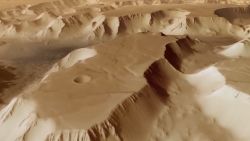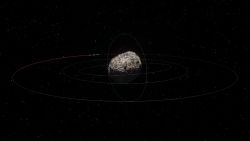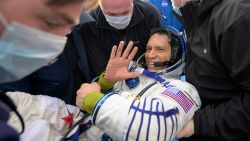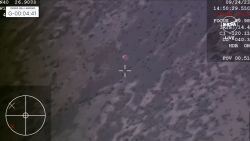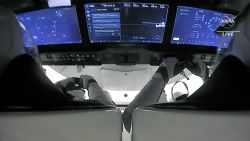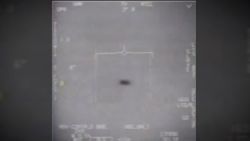A version of this story appeared in CNN’s Wonder Theory newsletter. To get it in your inbox, sign up for free here. Tell us what you’d like to see more of in the newsletter at sciencenewsletter@cnn.com.
As far as we know, Earth is a unicorn. We have yet to find a planet quite like ours.
Think of what you notice on Earth each day: the shapes of clouds, how hot the sun feels on your skin, the colors of the sky when the sun sets.
Now imagine standing on the surface of Mars. When the Curiosity rover looked up recently, it captured images of clouds. The formations are rare there, but they aren’t unheard of.
Observing Martian clouds can tell us more about the processes unfolding each day on the red planet – both Earth-like and yet unknown. It’s like finding out you have something in common with another person and suddenly, you understand them a little bit more.
Our corner of the cosmos remains filled with discoveries just waiting to be made.
Across the universe
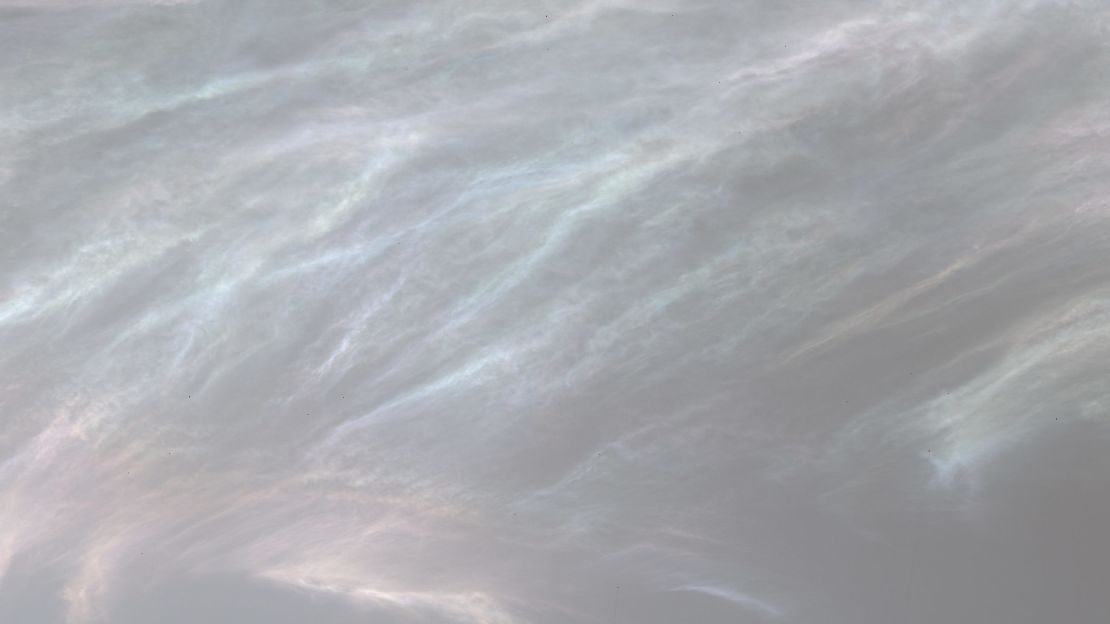
Mars has a thin, dry atmosphere. That means clouds tend to appear in the skies over its equator when the planet is farthest from the sun and at its coldest.
Such was the case in March when Curiosity’s camera captured skies sparkling with colorful wispy clouds, filled with ice crystals. These ice crystals appear to shimmer because they scatter sunlight.
The iridescent clouds form at a higher altitude, so they are essentially made of dry ice (frozen carbon dioxide). Scientists are still studying them to figure out why this happens.
Meanwhile, Curiosity is now heading for the hills in search of organic salts, which could reveal more about what caused the planet to become a barren wasteland 3 billion years ago – and may provide evidence of past Martian life, if it ever existed.
A long time ago…
Archaeologists have made a grisly discovery at three Roman cemeteries in eastern England.
Researchers uncovered 17 decapitated bodies, which they called an “exceptionally high” number. The remains were likely the result of executions for crimes or even ritual practice.
The rural settlements these people belonged to across Cambridgeshire helped provide the Roman army with food between 250 A.D. and 325 A.D.
It’s unclear why they were beheaded, but researchers believe tensions with the Roman army came into play.
Fantastic creatures

They call it puppy love for a reason. It turns out that puppies have excellent social skills because they are born ready to love and interact with people.
Researchers evaluated these skills in 375 8-week-old retrievers for a new study (dream job alert).
This involved making eye contact with the pups and having them follow hand and eye gestures toward hidden treats.
The team discovered that the dogs didn’t need to learn this behavior to find the treats – but there is something special you can do to get a puppy’s attention.
Other worlds
We’re going back to Venus for a long overdue visit. Well, we’re sending satellites in our place, that is. Venus is often called Earth’s twin, but it’s not a nice place for humans.
The planet may have been the first habitable world in our solar system, including an ocean and climate similar to Earth – but something happened to turn it into a crucible with temperatures hot enough to melt lead.
Two new missions, called VERITAS and DAVINCI+, have been greenlit by NASA. One will focus on the Venusian atmosphere, while the other is designed to map the planet’s surface. They won’t launch until 2028 and 2030, though, so we’ll have to wait to uncover the secrets of our closest planetary neighbor.
Only two prior NASA missions have visited Venus – Pioneer in 1978 and Magellan in the early ’90s.
Mission critical

The Southern Ocean around Antarctica is a wild place, with such terrifying waves and wicked winds that few humans have dared cross it. Home to unique marine life, the body of water also plays another vital role: absorbing 12% of the carbon dioxide we create each year.
For the last 10 years, French explorer and environmentalist Dr. Jean-Louis Étienne has worked on designing a vessel that could withstand these brutal conditions while gathering scientific data.
The result: a floating laboratory called the Polar Pod. An engineless vessel designed to flip on its side, the pod will be driven by the Antarctic Circumpolar Current.
The crew will remain in the top portion during the journey. Scientists will be able to listen to sea creatures beneath the water and understand how much carbon dioxide is in the ocean.
And the team won’t be entirely alone at the bottom of the world.
To get the latest news on the climate crisis, download the CNN app and activate alerts.
Curiosities
Here are some other headlines that snagged our attention this week:
– A rare iron mineral has been discovered in the teeth of a living organism for the first time – one that researchers affectionately refer to as “wandering meatloaf.”
– You have never seen the Milky Way like this. Telescopes revealed what the “violent energy” at the center of our galaxy looks like, and it’s breathtaking.
– Explore the wonderfully weird history of plastic surgery from ancient Egypt to Beverly Hills, California.
Like what you’ve read? Oh, but there’s more. Sign up here to receive in your inbox the next edition of Wonder Theory, brought to you by CNN Space and Science writer Ashley Strickland, who finds wonder in planets beyond our solar system and discoveries from the ancient world.












